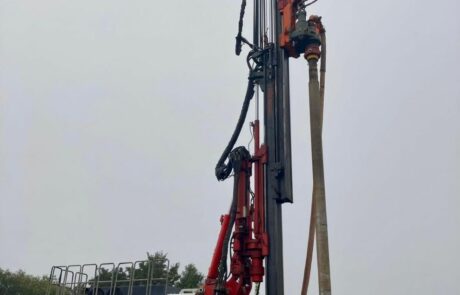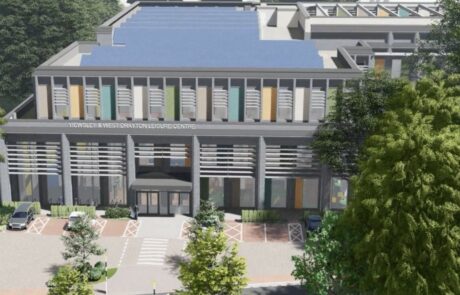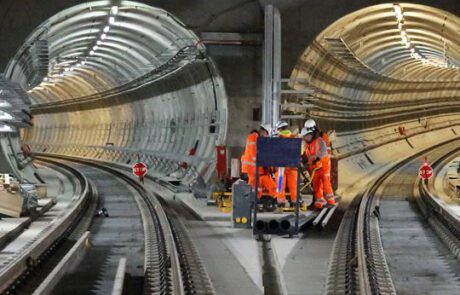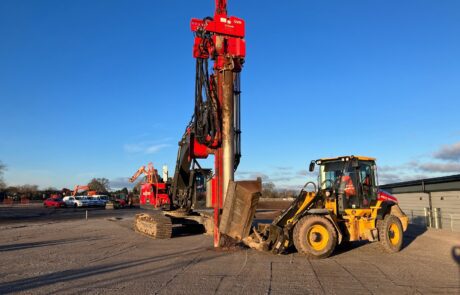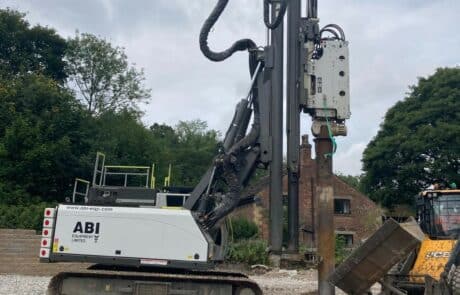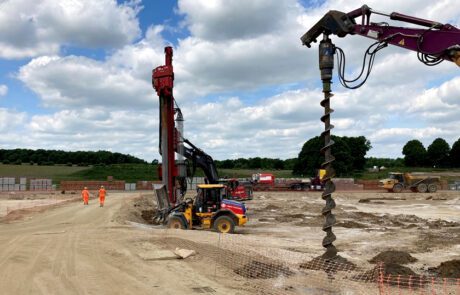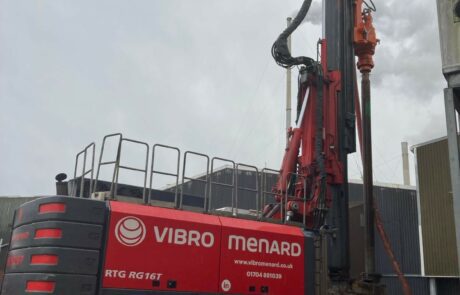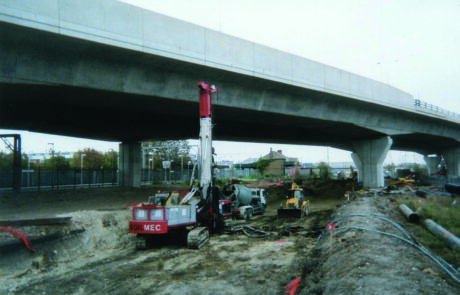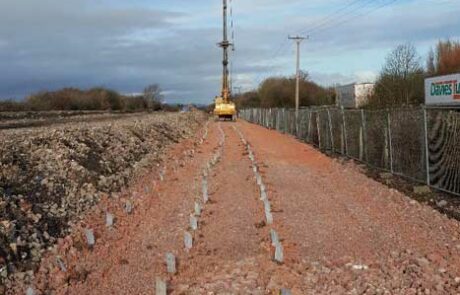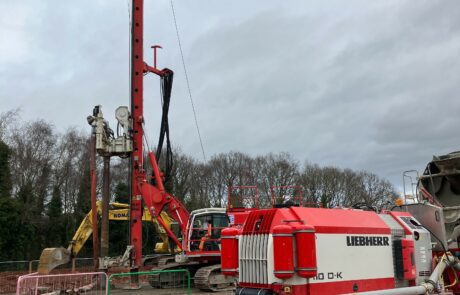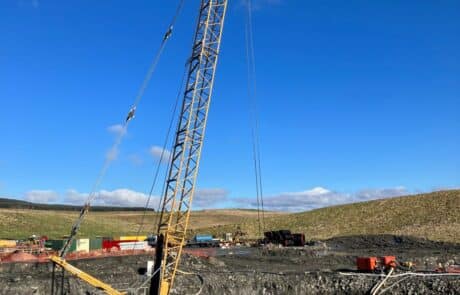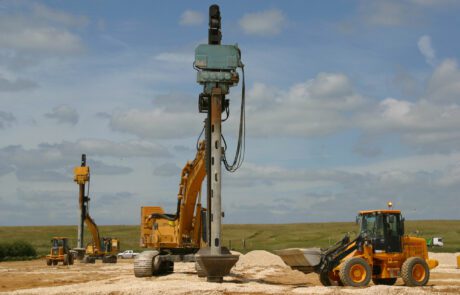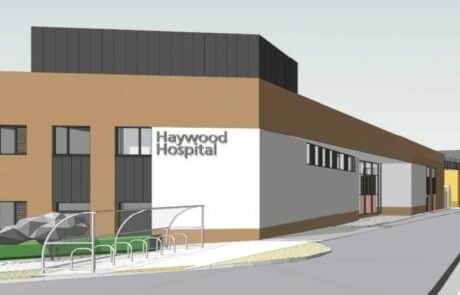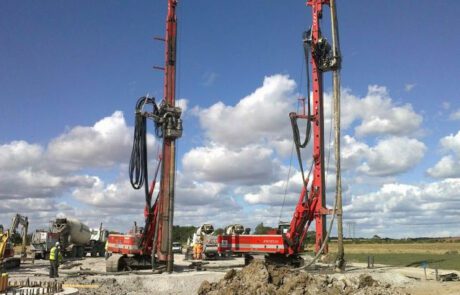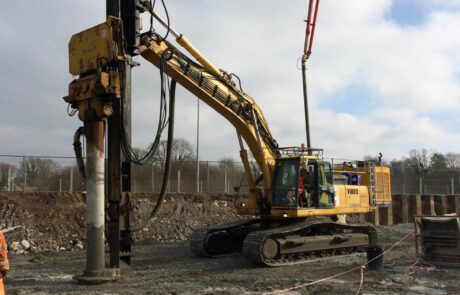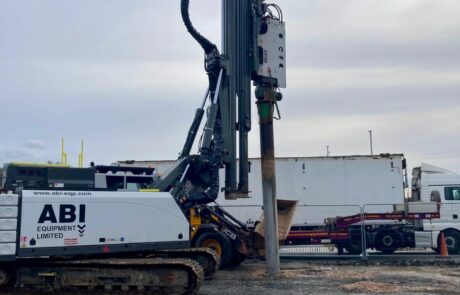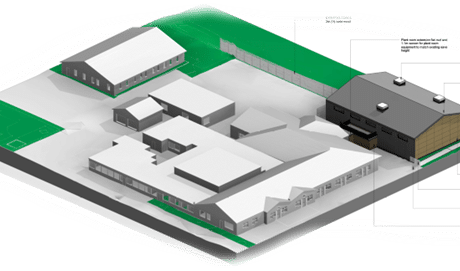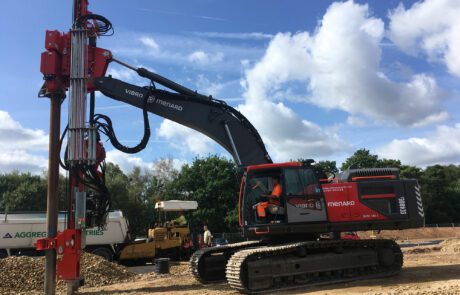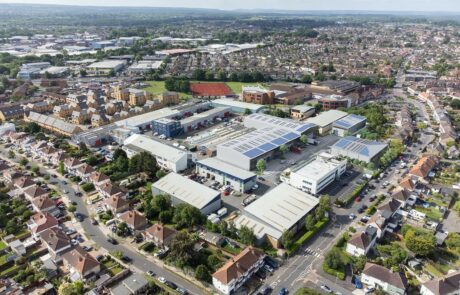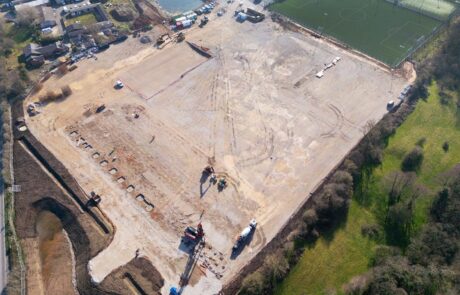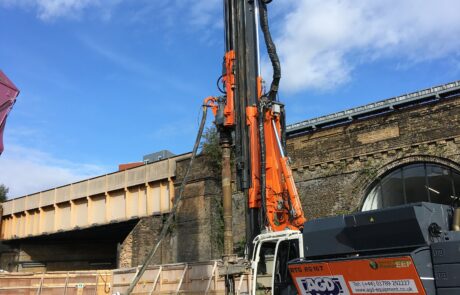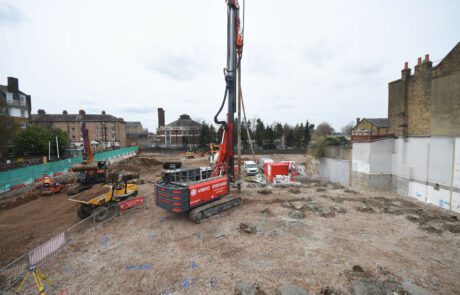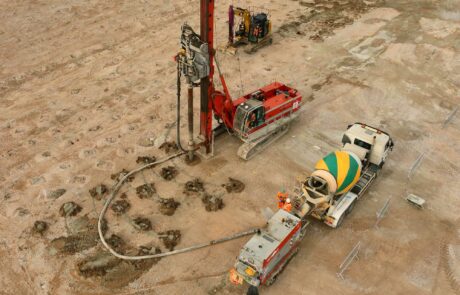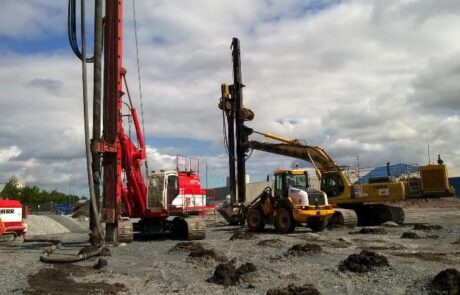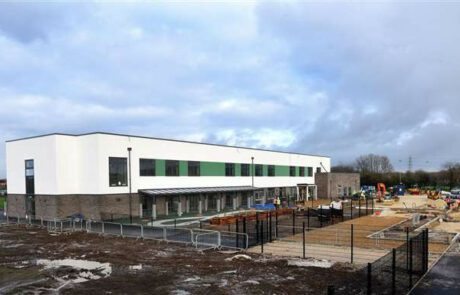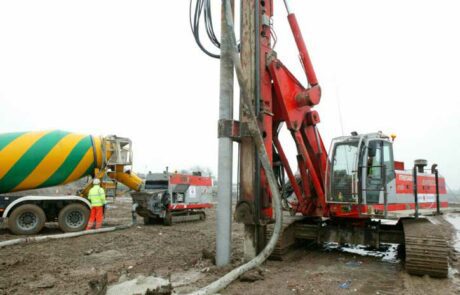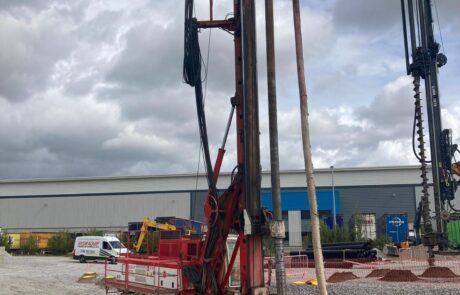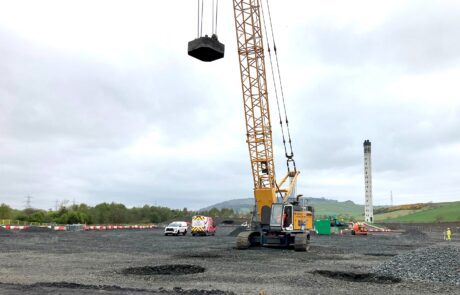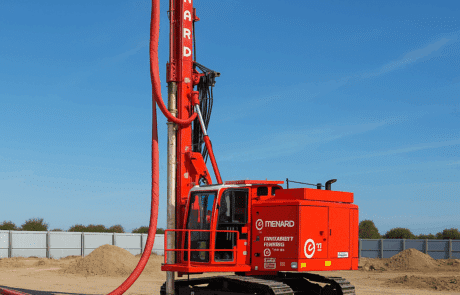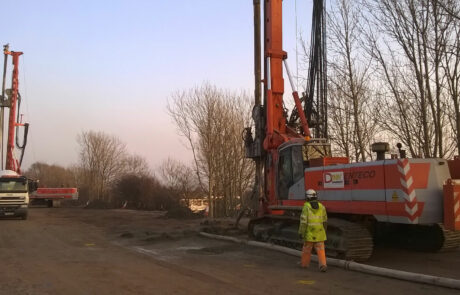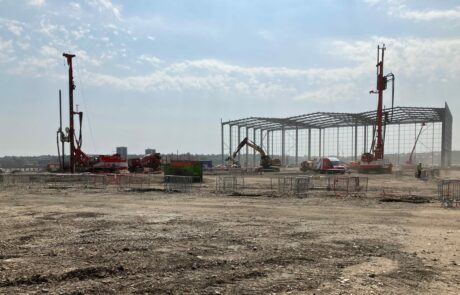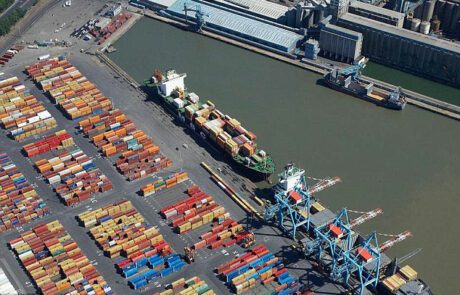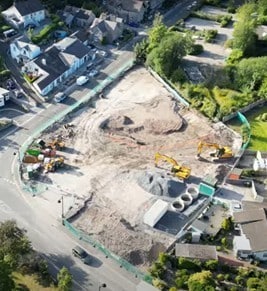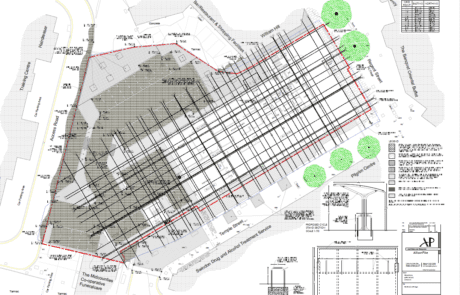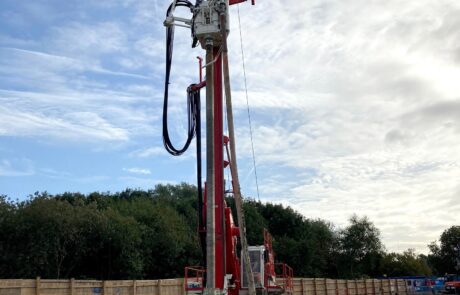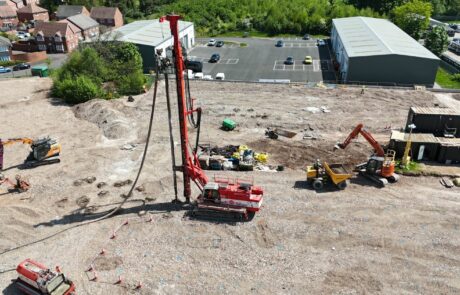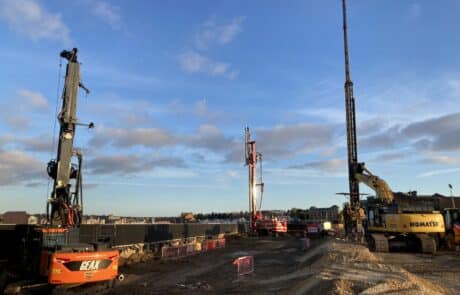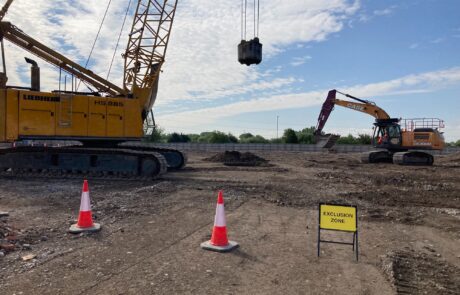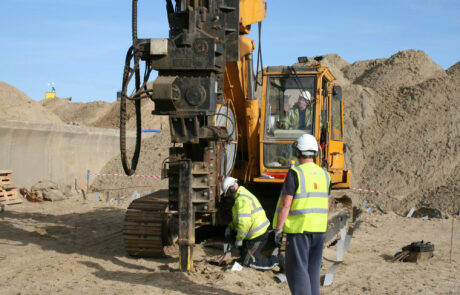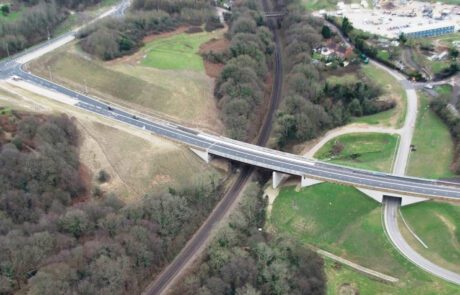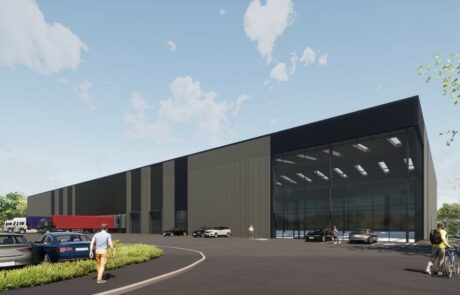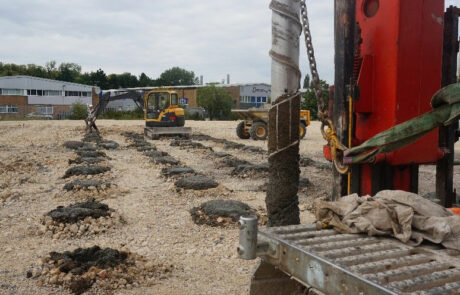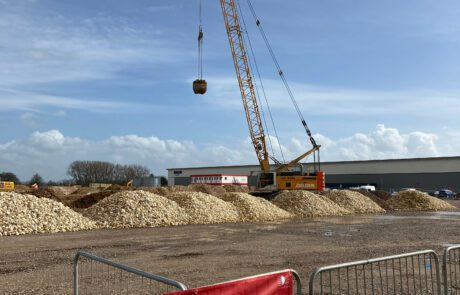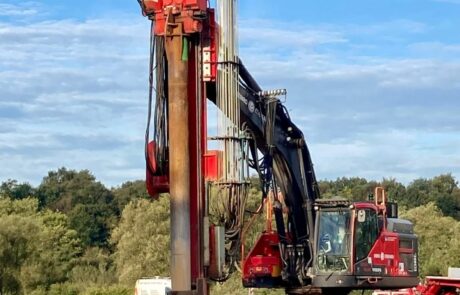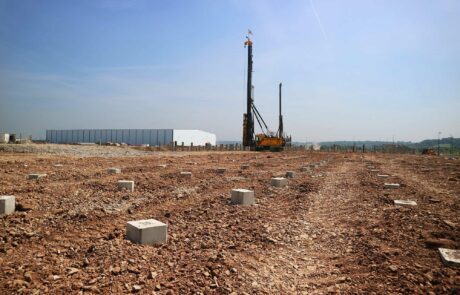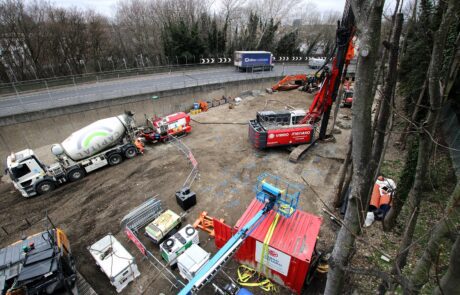OWNER:
Avanton Limited
ENGINEER:
BW Murray
GENERAL CONTRACTOR:
GS8 Construction
MAIN FIGURES:
442 Controlled Modulus Columns

Project Details
BW Murray approached Menard UK to find a cost-effective alternative foundation solution for the redevelopment of the industrial complex Culvert Court in Battersea, London, with the construction of 3 separate steel-framed industrial type buildings totalling 1,540 m² of ground floor. The 1- to 3-storey logistic buildings are to support a uniformly distributed load of 10 kPa on the slab, whilst the frame structure brought point loads of up to 2,000 kN SLS. The site is located in a very constrained environment: it borders on the main Network Rail line that serves Clapton Junction to the South and on a residential road to the North, with a tight access site in this urban environment.
Ground Conditions
The initial site investigation revealed relatively homogeneous ground conditions, with about 1 m of made ground underlain by up to 2 m of very soft alluvial clay above dense gravels (Kempton Park Gravel Member) and stiff clay (London Clay formation). At the request of Menard UK, additional site investigation by CPT has been carried out across the whole site to map more precisely the variations of the different layers and inform the detailed CMC design.
Solution
Menard UK offered a bespoke solution of Controlled Modulus Columns (CMC) rigid inclusions as an alternative to deep trench fill foundations for which the excavations would be very unstable due to the depth to the competent gravel layer (up to 3 m). The CMC installation being vibration-free, it was perfectly suited for this site because of the presence of sensitive structures in close proximity (railway line and houses). The CMC technique had also huge advantages over other traditional solutions such as piling, by allowing the construction of conventional shallow foundations, reducing the embodied carbon footprint, accelerating and simplifying the construction sequence, and reducing costs. The CMC have been designed to reduce the residual settlements to 25 mm, with relative differential settlements lower than 1/500, and enhance the allowable bearing capacity to 250 kPa beneath the footings. The final detailed design, which had to go through Network Rail’s approval process, comprised more than 440 CMC taken to depths about 2 to 3.5 m. The CMC works have been completed in only a week on site and have been verified through a thorough quality control system. In such a constrained environment, coordination with other trades was paramount and site-specific measures have been implemented to ensure that the works were conducted safely.
Sustainable Development
The use of a low-carbon concrete, with a mix design using a high proportion of GGBS, led to a reduction of the overall carbon footprint of the project.


